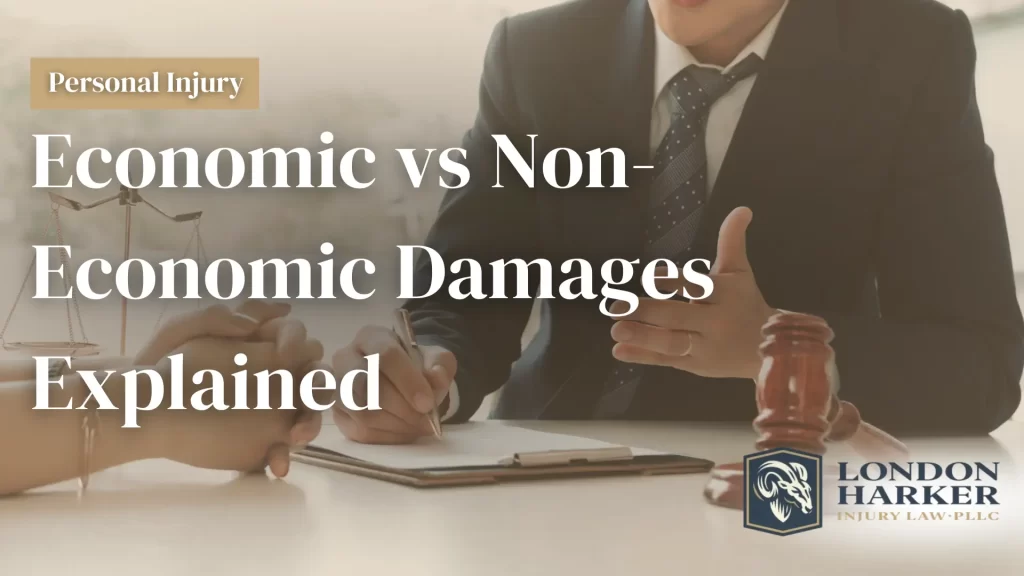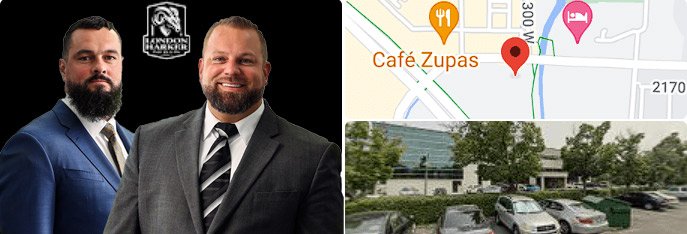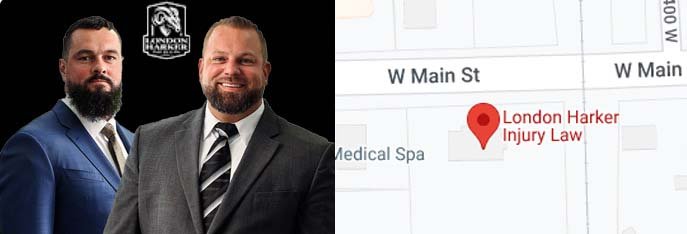Posted on Monday, April 8th, 2024 at 5:35 pm

If you’ve been injured in an accident caused by someone else’s negligence, you may be entitled to compensation for your losses. In personal injury claims, this compensation is often called “damages.” There are two main types of damages: economic and non-economic. Understanding the difference between these two types of damages is crucial when seeking the compensation you deserve.
At London Harker Injury Law, our experienced Sandy personal injury attorneys and Provo personal injury attorneys help clients in Utah navigate the complex process of recovering damages after an accident. We know how overwhelming it can be to deal with an injury’s physical, emotional, and financial aftermath, and we’re here to help you every step of the way.
What are Economic Damages?
Economic damages are the tangible monetary losses you’ve incurred due to your accident. These damages are usually easy to calculate and prove because they come with receipts, bills, and other documentation. Common examples of economic damages include:
- Medical expenses: This includes the cost of all medical treatment related to your injuries, such as hospital bills, doctor’s visits, prescription medications, and physical therapy.
- Lost wages: If your injuries have forced you to miss work, you can seek compensation for your lost income.
- Property damage: If your personal property, such as your car or belongings, was damaged in the accident, you can seek compensation for the cost of repairs or replacement.
- Future expenses: If your injuries are expected to require ongoing medical treatment or will impact your ability to work, you can seek compensation for these anticipated expenses.
Economic damages help you recover the tangible financial losses from the accident. By seeking compensation for these damages, you can ensure that you’re not left bearing the burden of these expenses on your own.
What are Non-Economic Damages?
Non-economic damages, on the other hand, are the intangible losses that you’ve suffered as a result of your accident. These damages don’t come with a price tag and can be more challenging to calculate and prove. Common examples of non-economic damages include:
- Pain and suffering: This refers to the physical pain and emotional distress you’ve experienced due to your injuries. This includes mental health disorders, mental anguish, and post-traumatic stress disorders (PTSD) that you may experience.
- Loss of enjoyment of life: If your injuries have prevented you from participating in activities you once enjoyed or have otherwise diminished your quality of life, you can seek compensation for this loss.
- Disfigurement or disability: If your injuries have left you with permanent scars, disfigurement, or disability, you can seek compensation for the impact this has had on your life.
- Loss of consortium: If your injuries have impacted your relationship with your spouse or family members, you can seek compensation for this loss.
Non-economic damages are intended to compensate you for the pain and suffering and/or non-monetary losses you’ve suffered due to the accident. While these losses may be more challenging to quantify, they are no less real and significant than economic damages.
How to Calculate Economic and Non-Economic Damages
Calculating economic damages is relatively straightforward because these losses come with a clear monetary value. Your attorney will help you gather all necessary documentation, such as medical bills and pay stubs, to prove the extent of your economic losses.
On the other hand, calculating non-economic damages is more complex because these losses don’t have a clear monetary value. In many cases, attorneys will use a multiplier method to determine the value of non-economic damages. This means they will multiply the total economic damages to arrive at a fair value for non-economic damages. This is usually between 1.5 and 5 times of total economic damages.
If your economic damages total $50,000 and your attorney applies a multiplier of 3, your non-economic damages value at $150,000. The specific multiplier used will depend on the severity of your injuries, their impact on your life, and other factors unique to your case.
What are Punitive Damages?
 In some cases, you may also be entitled to punitive damages. Economic and non-economic damages compensate you for your losses. Punitive damages punish the defendant for particularly egregious behavior and deter others from engaging in similar conduct.
In some cases, you may also be entitled to punitive damages. Economic and non-economic damages compensate you for your losses. Punitive damages punish the defendant for particularly egregious behavior and deter others from engaging in similar conduct.
In Utah, punitive damages are only available in cases where the defendant’s conduct was willful and malicious. It can also be available if they showed a knowing and reckless indifference and blatant disregard for other’s rights. Your attorney may seek punitive damages if your case involves this type of conduct.
Pursuing Damages with London Harker Injury Law
If you’ve been injured in a car accident in Utah, it’s difficult to pursue damages on your own. At London Harker Injury Law, our experienced Sandy personal injury attorneys and Provo personal injury attorneys are here to help you every step of the way.
We’ll thoroughly investigate your personal injury case, gather all evidence and documentation, and build a strong case. We’ll also handle all communications with the insurance companies and other parties involved in your case so you can focus on your recovery.
We aim to help you recover the total and fair compensation you deserve for your economic and non-economic losses. Though no amount of money can erase the pain and suffering you’ve experienced, you can rebuild your life and move forward long-term.
Contact our legal team today at 77CARCRASH for a free consultation with one of our experienced personal injury attorneys. We’ll listen to your story, answer your questions, and help you understand your legal options. With our team on your side, you can feel confident that your case is in good hands.



